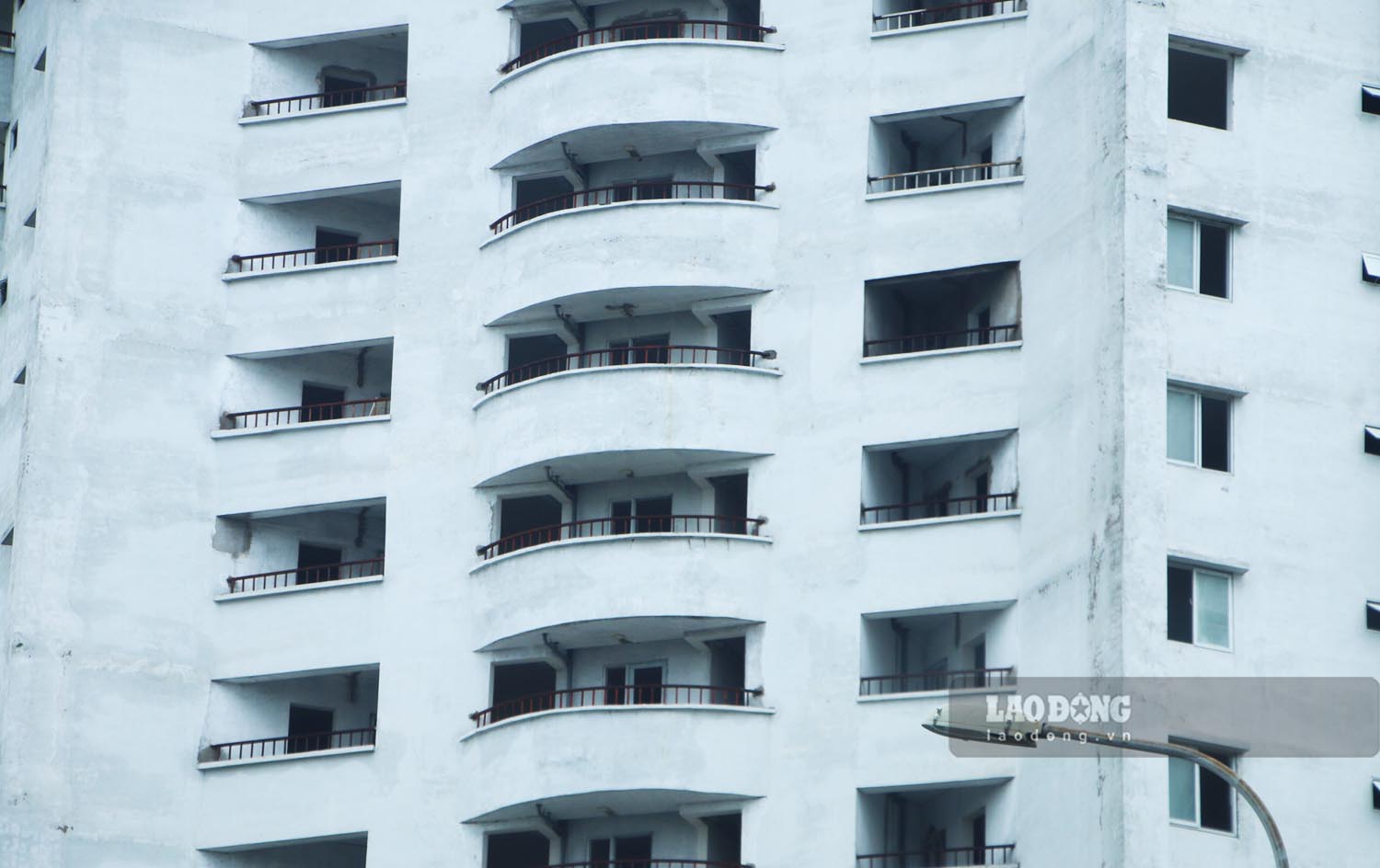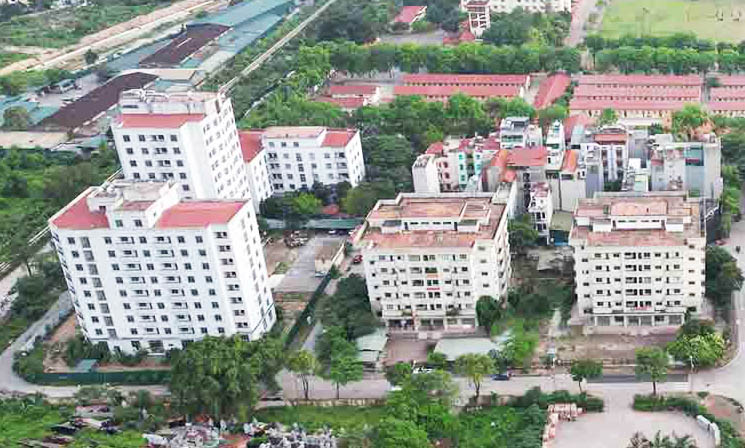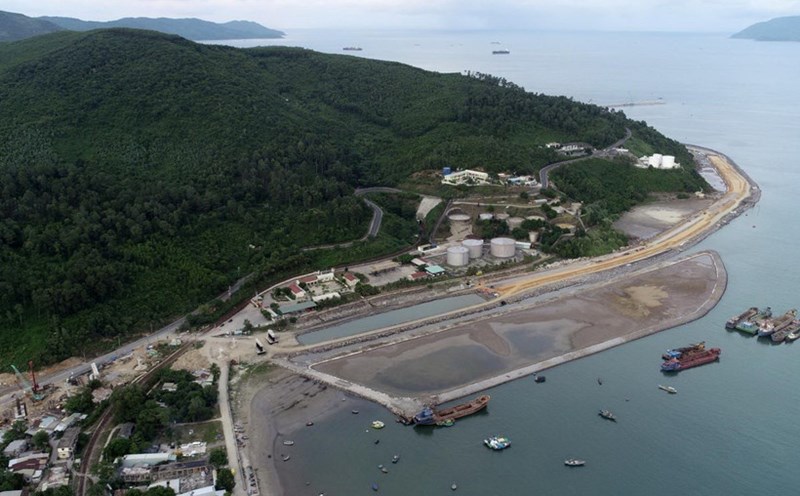The N01 resettlement housing project is located right next to the intersection between Duy Tan and Tran Thai Tong streets, not far from the headquarters of the administrative agency. This is still considered the "golden land" of Cau Giay ward. However, for more than 10 years, this project has been unfinished.
The N01 resettlement house started in February 2011, and is expected to be completed and put into use after more than 2 years of construction. However, in 2013, due to many problems, the project was extended and then almost fell into a state of inactivity.
According to the reporter, the N01 reconstruction house project has currently built 15 floors above ground and 1 basement on a total area of 2,700m2. The exterior of the building has been completed, but after a long period of sun and rain and no maintenance, the plaster and paint have peeled and degraded.
Inside the project, many items have not been completed, construction materials are scattered. Electricity, water, and fire prevention and fighting systems are installed unfinished.


Ms. Tran Thi Lien (Cau Giay ward) said that for the past ten years, the construction has been unfinished, the building has been almost abandoned. In mid-2025, workers were seen clearing and resuming construction, but it has not been completed yet.
"The entire project in the middle of the bustling neighborhood is like an abandoned house, painted peeling, the railings are rusty and degraded while many people have no houses. I also hope the project will be put into operation soon, avoiding waste, and ensuring urban aesthetics," said Ms. Lien.
The NO1 resettlement project has 299 apartments, and after completion, it is expected to accommodate about 1,200 people. To date, the construction volume has been completed over 90%.
According to the Cau Giay Construction Investment Project Management Board, the reason for the project's delay is due to many changes in construction standards, regulations, material prices, labor, policies, as well as new standards on fire prevention and fighting.
In addition, the lack of capital also prolongs construction when the capital allocated for this project only reaches nearly 30% of the annual registration demand.
It is known that in January 2025, the People's Committee of Cau Giay District (at the time when the district level had not been abolished) submitted a proposal to the People's Committee of Hanoi City to arrange capital to implement the project in 2025 of 71 billion VND and was approved by the City People's Council. The project is expected to be completed, finalized and handed over for use in early 2026.
Currently, there are 170 resettlement housing projects in Hanoi, including about 4,000 unused apartments. Of which, 9 projects use budget capital with a scale of about 2,491 apartments, 2 projects have been completed and put into use with about 600 apartments, 7 projects are under construction.

Many unfinished resettlement housing projects, even abandoned for many years, are in short supply with social housing in Hanoi. Meanwhile, the average apartment price in Hanoi has exceeded 65 million VND/m2, beyond the affordability of most people.
Recently, Deputy Prime Minister Tran Hong Ha requested the People's Committees of provinces and cities to focus on resolving difficulties and obstacles for real estate projects, reviewing and classifying projects with legal problems so that when the National Assembly allows the expansion of the scope of application, it can be implemented immediately. Proactively review resettlement housing projects and commercial housing that have been completed but not used to propose competent authorities to allow conversion to social housing.
Commenting on this issue, Mr. Nguyen Chi Thanh - Vice President of the Vietnam Real Estate Brokers Association - said that the price of real estate and apartments is increasing very high compared to the actual income of the people.
"Putting works in sensitive locations into exploitation and use will contribute positively, helping to improve urban landscape and improve efficiency in exploitation and use, increasing housing supply for people," said Mr. Thanh.











